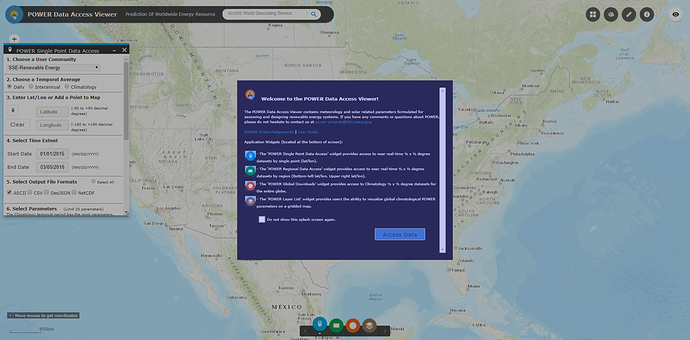The amount of energy that a solar panel can produce depends on the irradiance (energy from the sun per unit area) on your specific location. To know this value for your location, you can go to the NASA POWER (Prediction of Worldwide Energy Resources) website .
Click on the POWER Data Access Viewer. It will take you to a map.

On the window on the right, click on Climatology and then enter your location’s latitude and longitude. On the Select Parameters part on the bottom, double click on the Tilted Solar Panels folder. The parameter that we are interested in is Solar Irradiance for Equator Facing Tilted Surfaces (Set of Surfaces). Click on Submit.
To maximize the energy produced by the solar panel, it must be pointed to the Equator (South for locations in the Northern Hemisphere and vice versa) at a tilt angle that is equal to your location’s latitude. The NASA Power website shows the different irradiance levels for different tilt angles of your solar panels. For this example, let us assume that we have an irradiance of 5.0 based on our tilt angle.
We will need to set the worst-case scenario where we have the minimum number of sunshine days per our maximum number of continuous rainy days. To maximize our system’s reliability, we can set 2 sunshine days per 3 continuous rainy days. This means that in these 2 sunshine days, our solar panel must be able to produce energy for our gateway and fully charge the batteries. The total of this energy is equal to:
432Wh (36Ah at 12V) + 288Wh (0.5Ah at 12V for 2 days) = 720Wh
720Wh/5 (irradiance)/0.8 (correction for efficiency) = 180W
Since this is for 2 days:
180W/2 = 90W ≈ 100W

